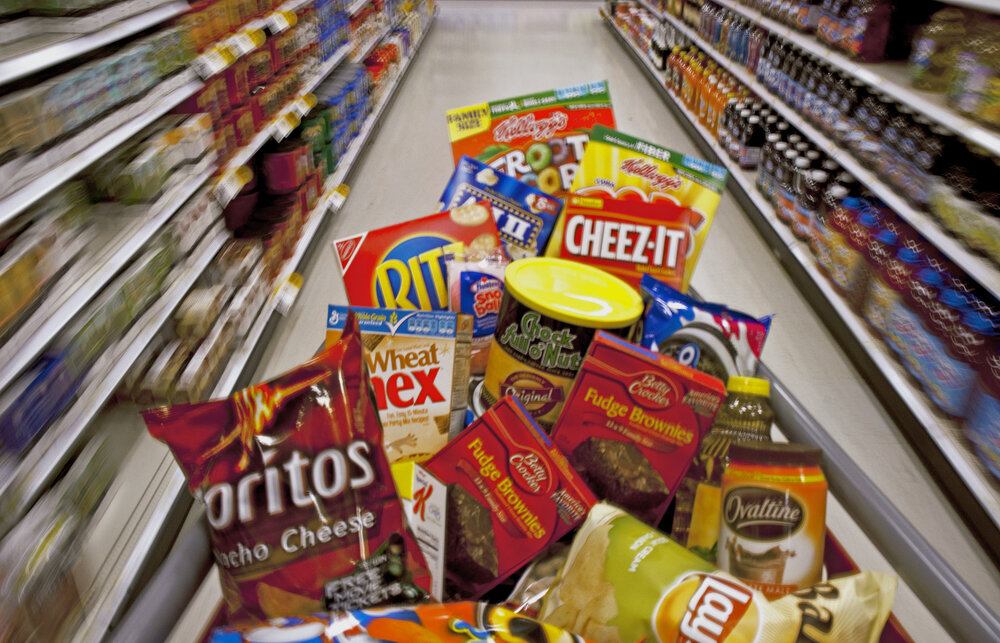Debunking the Idea that "All Foods Fit"
I have been a dietitian for 7 years now and in that time there has been a distinct shift in thinking around dietetic practice. Despite the name of our credential, many dietitians have become quite vehemently anti-diet. The past few decades have seen a wide range of fad diets with varying amounts of scientific backing. But regardless of their rationality and efficacy they all seem to have a common fatal flaw – very few people can deprive themselves of food long term. So now, many dietitians are eschewing the idea of removing certain foods from the diet and instead promoting the phrase “all foods fit.”
The phrase “all foods fit” is meant to tell patients that no food is off limits, you just have to find balance in your choices. Here’s how a few dietitians describe it:
“All Foods Fit promotes mindful practices that show you how to easily create a healthy diet while still eating foods like pizza and French fries.”
“All foods fit is designed to help you fit in your favorite foods and still make your doctor happy!”
“All foods serve a purpose in your diet. Society tries to label foods ‘good and bad’, ‘clean and unclean’, or ‘shoulds and shouldn’ts', but the truth is you can eat all foods.”
Many dietitians teach this concept within the larger framework of something called Intuitive Eating. Intuitive Eating is an approach to health and food that has nothing to do with diets, meal plans, discipline or willpower. It teaches you how to get in touch with your body cues like hunger, fullness and satisfaction while learning to trust your body around food again.
It all sounds lovely, and if you follow me on social media you know that in theory I agree. My family eats sweets fairly often and we certainly indulge in restaurant food from time to time. And I frequently talk about how to teach kids to follow their hunger and fullness cues, rather than pressuring them to “take another bite.”
But to me this anti-diet, relying entirely on hunger and fullness cues and permission to eat anything, has some fatal flaws of its own:
The reality is, sugar is chemically addicting. It is well established that sugar releases opioids and dopamine and thus might be expected to have addictive potential. Indeed, researchers have shown its addictive nature in countless animal studies. So the idea that people will just stop eating sweets when they’re full is simply unfounded. Yes, this concept probably works just fine with steak, or broccoli, or perhaps even slowly absorbed starchy carbohydrates like potatoes. But add sugar to the mix and all bets are off.
Processed foods are chemically formulated to be addicting. Food scientists use sugar, salt, fat and a litany of man-made additives to ensure that “once you pop, you can’t stop.” The New York Times Magazine published an exposé on this practice back in 2013 and the behind-the-scenes details of food science are truly astounding. The author discusses the concept of sensory-specific satiety, which is the tendency for big, distinct flavors to overwhelm the brain, which responds by depressing your desire to have more. The most popular (i.e. addicting) junk foods are designed to avoid this response. They are specifically formulated to pique the taste buds enough to be alluring while avoiding any distinct, overriding single flavor that tells the brain to stop eating.
This is why I can’t fully get on board with these concepts. My job as a dietitian is to give you all of the information, and to empower you to gather more information on your own. You can choose to eat processed foods – my family sometimes does. But you cannot rely on your body to tell you when to stop eating these foods. You must read the ingredients to determine just how processed the food is, and know that you will likely need to rely on willpower to maintain portion control. This willpower is not necessary if you are eating a home cooked meal of unprocessed plants and animals. Eat as much of your pork chops, Brussels sprouts and brown rice as you want! But if you choose Rice-A-Roni instead of homemade brown rice with salt and butter, know that many of the following ingredients were added simply to make you override your hunger cues and eat (and buy!) more:
RICE-A-RONI CHICKEN FLAVOR: RICE, WHEAT FLOUR, SALT, SUGAR, AUTOLYZED YEAST EXTRACT, HYDROLYZED SOY PROTEIN, ONIONS*, MONOSODIUM GLUTAMATE, NATURAL FLAVOR, PARSLEY*, GARLIC*, CHICKEN BROTH, CHICKEN FAT, TURMERIC [COLOR], FERRIC ORTHOPHOSPHATE, NIACIN, DISODIUM GUANYLATE, DISODIUM INOSINATE, FERROUS SULFATE, THIAMIN MONONITRATE, TURMERIC EXTRACT [COLOR], FOLIC ACID, RIBOFLAVIN.
To be perfectly honest (and I always strive to be!), heavily processed foods DON’T FIT. We should not eat them, ever. I refuse to use my platform to make people feel better about bad choices. Sure, I’ll use it to sympathize with you, and I do that by showing you that even dietitians eat junk food from time to time. But I will always call myself out, and show you exactly what motivates me not to make these choices too often. I’ll also help you learn to make homemade special treats, allowing you to avoid at least the heavily processed junk. Organic cane sugar, honey, coconut palm sugar, maple syrup – they’re all still sugar and they’re all still addicting, but there’s certainly an advantage to homemade treats made with whole grains or organic whole milk dairy and butter. At the end of the day I will admit that “all foods get eaten,” but I will never stop helping you eat better foods.
